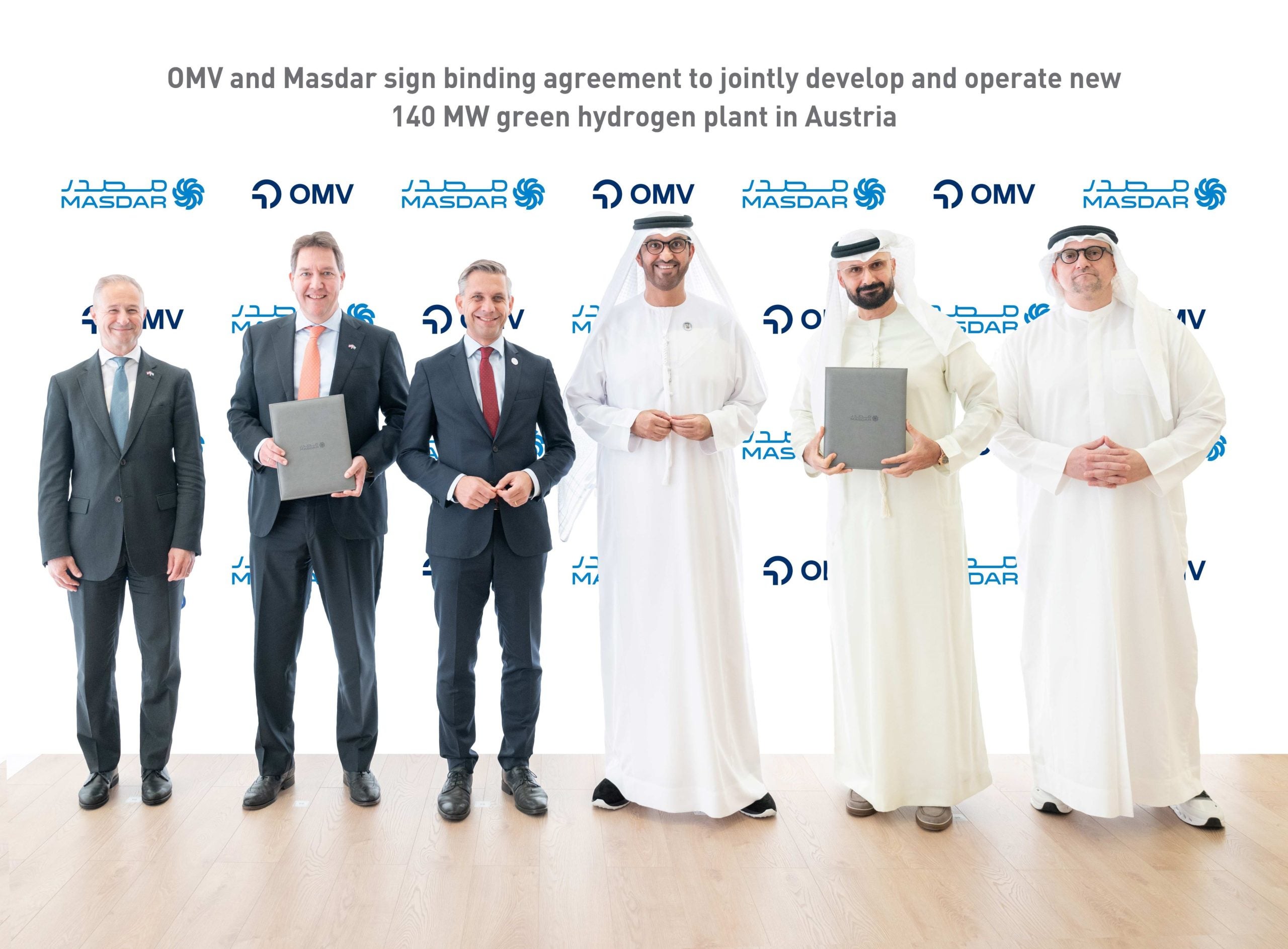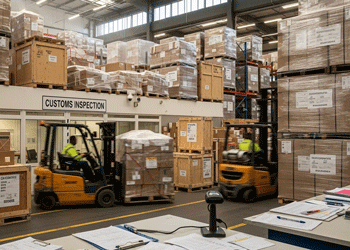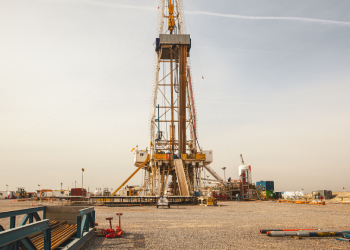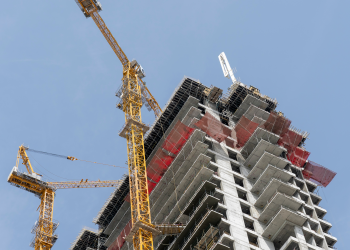GCC becomes a top tourist destination
28 March 2024

This report on hotel investment also includes: Region heads for hotel boom
The GCC’s pulling power as a tourist destination was reinforced in early March when Dubai-based developer Emaar announced that Dubai Mall was the most visited place on earth in 2023, with 105 million visitors – a jump of over 19% from the 88 million recorded in 2022.
The developer also revealed that the performance has continued into 2024, with 20 million people visiting the mall during the first two months of this year.
Dubai Mall’s performance is just one facet of Dubai’s resurgent tourism industry. After a difficult year in 2020, the emirate has bounced back as a tourism destination and is now welcoming more visitors than it did before the Covid-19 pandemic.
In 2023, Dubai welcomed more tourists than ever before. There were 17.15 million international overnight visitors, according to data published by the emirate’s Department of Economy & Tourism. The total represents 19.4% growth when compared to the 14.36 million tourist arrivals recorded in 2022.
The 2023 total also exceeded the previous record of 16.73 million visitors that was registered in 2019.
The performance has continued into 2024. Dubai welcomed 1.77 million international tourists in January 2024, an increase of 21% compared to the 1.47 million visitors recorded in the same period of 2023.
Dubai Mall was the most visited place on earth in 2023, with 105 million visitors
Saudi tourism growth
While full-year data for most other GCC markets has yet to be reported, one other GCC country that has recorded strong numbers for 2023 is Saudi Arabia.
The kingdom welcomed more than 100 million tourists last year, achieving its 2030 goal seven years early. The 2023 total comprised 77 million domestic and 27 million international visitors, generating revenues of $27bn for the kingdom.
 Saudi tourism numbers cross 100 million
Saudi tourism numbers cross 100 million
Riyadh wants more growth and aims to emulate Dubai by developing ambitious projects that are designed to be global attractions in the future. The target now is to increase tourist numbers to the kingdom to 150 million by the year 2030, with a split of 80 million domestic and 70 million international tourists.
Saudi Arabia welcomed more than 100 million tourists last year, achieving its 2030 goal seven years early
Regional travel
Digging deeper into the data for Dubai reveals an interesting trend. Western Europe ranked first in terms of source markets for international tourists with a share of over 18%, or 327,000 visitors. This was closely followed by the GCC countries with 311,000 visitors, representing nearly 18%.
Intra-GCC tourism has been identified by policy makers as a key driver for future growth in the region. The logic is simple: the six-country block is home to 60 million people with many wealthy frequent travellers.
The importance of GCC travellers is evidenced by statistics from GlobalData, which show that Saudi Arabia was the largest source market for travellers visiting the six GCC states in 2023, with a total of 6.3 million travellers.
Oman and Kuwait were also in the top 10, accounting for 2.3 million travellers each.
The GCC is also promoting travel within the region by implementing a unified tourist visa for the six countries. The concept was discussed, along with the Gulf Tourism Strategy, at the eighth meeting of GCC tourism ministers in Doha earlier this year.
The GCC tourist visa is expected to significantly improve the Gulf states’ standing as a tourist destination by making travel within the region easier for visitors from outside.
The visa, which is expected to operate in a similar way to the EU’s Schengen Visa, will allow tourists to visit GCC countries on a single visa.
The move to make travel within the region more frictionless should enhance the performance of the GCC’s tourism sector in the future.
Exclusive from Meed
-
 Bahrain advances utility reform
Bahrain advances utility reform7 November 2025
-
 Masdar and OMV sign 140MW green hydrogen plant deal
Masdar and OMV sign 140MW green hydrogen plant deal7 November 2025
-
 Firms submit Saudi customs warehouses PPP bids
Firms submit Saudi customs warehouses PPP bids7 November 2025
-
 KBR selected for Iraq gas project
KBR selected for Iraq gas project7 November 2025
-
 Turkish contractor wins Aldar Verdes by Haven project
Turkish contractor wins Aldar Verdes by Haven project7 November 2025
All of this is only 1% of what MEED.com has to offer
Subscribe now and unlock all the 153,671 articles on MEED.com
- All the latest news, data, and market intelligence across MENA at your fingerprints
- First-hand updates and inside information on projects, clients and competitors that matter to you
- 20 years' archive of information, data, and news for you to access at your convenience
- Strategize to succeed and minimise risks with timely analysis of current and future market trends

Related Articles
-
 Bahrain advances utility reform
Bahrain advances utility reform7 November 2025

In September, Bahrain’s government referred a draft law to parliament to restructure the kingdom’s electricity and water sector.
This proposes dissolving the Electricity & Water Authority (Ewa) and transferring its assets and functions to a newly established National Electricity & Water Company, which will operate under the oversight of the Electricity & Water Regulatory Authority.
The reform marks the first full structural overhaul of Bahrain’s utilities sector in nearly two decades and signals a shift towards a more commercially driven model.
Regulatory and operational roles would be separated for the first time, allowing private sector participation under transparent licensing and tariff systems, aligning Bahrain with utility reforms seen in Saudi Arabia, Oman and the UAE.
It comes amid a relatively subdued year for new contracts that broadly falls in line with 2024’s performance. Most significantly, Bahrain continues to move towards its two upcoming utility public-private partnership (PPP) schemes, the Sitra independent water and power project (IWPP) and the Al-Hidd independent water project (IWP).
In August, a developer tender was issued for the main works package for the Sitra IWPP. This followed the prequalification of seven companies and consortiums, reflecting a wide range of international interest.
The planned Sitra IWPP replaces the previously planned Al-Dur 3 and will be the first IWPP project to be awarded since the 1,500MW Al-Dur 2 IWPP was completed in 2021.
The combined-cycle gas turbine (CCGT) plant is expected to have a production capacity of about 1,200MW of electricity, while the project’s seawater reverse osmosis (SWRO) desalination unit will have a production capacity of 30 million imperial gallons a day (MIGD) of potable water. The main contract is expected to be awarded by the end of the year, with commercial operations set for 2029.
A developer tender was also recently launched for Bahrain’s first independent, standalone SWRO plant following a prequalification process that shortlisted nine companies and consortiums.
The Al-Hidd IWP is expected to have a production capacity of about 60MIGD of potable water and be completed in 2028. It is likely to be the last IWPP for Bahrain, which aims to reach net-zero carbon emissions by 2060.
The imminent launch of the two projects boosts Bahrain’s projects pipeline, which has experienced muted growth in the aftermath of the Covid-19 pandemic, carried by relatively small-scale projects.
Solar PV projects
The creation of the National Electricity & Water Company as Bahrain’s new operational entity could also support the rollout of future renewable energy schemes.
As a corporatised offtaker, the company will be able to enter long-term power purchase agreements (PPAs) with private developers under a more bankable framework. Currently, these are negotiated by Ewa on a case-by-case basis.
The government recently signed a 123MWp solar PPA with the UAE’s Yellow Door Energy, highlighting growing private sector interest in the market. The project includes the world’s largest single-site rooftop solar installation and will be developed at Foulath Holding’s industrial complex in Salman Industrial City.
Bahrain has already set a target to source 20% of its energy from renewables by 2035 and reach net-zero emissions by 2060.
In October, Ewa also issued a tender for the development of the Bilaj Al-Jazayer solar independent power project (IPP). The planned 100MW project will be developed on a build-own-operate basis with a 25-year contract term.
In parallel, Bahrain is broadening its long-term energy strategy beyond solar. In July, the kingdom signed a cooperation agreement with the US on the peaceful use of nuclear energy, aimed at advancing research and potential deployment of small modular reactor (SMR) technology.
For countries like Bahrain, which has limited land availability and high energy demand growth, SMRs could offer a way to produce low-carbon, reliable baseload power without requiring vast areas of land for solar or wind farms.
Officials have indicated that SMRs, along with floating solar solutions, are being studied as part of a broader push to diversify energy sources and expand renewable generation capacity.
Water and waste
Bids for four Ewa-owned projects are currently being evaluated. This includes the construction of a new SWRO desalination plant on Hawar Island and rehabilitation works for the Ras Abu Jarjur water treatment plant in Askar. Contracts for both projects are expected to be awarded this year.
Bahrain’s Ministry of Works (MoW) is the other client for the island-state’s power and water infrastructure-related projects. It has awarded three smaller sewage-related contracts this year.
It is also preparing to tender the construction of a $130m sewage treatment plant in Khalifa City, which will be developed in two phases. Meanwhile, the construction of MoW’s sewerage scheme phase 2 network in Bahrain remains in the early design stage with no further updates.
As Bahrain moves ahead with these projects, the new electricity and water law could define how future investments are structured, regulated and financed. This could reshape the kingdom’s utilities landscape for decades to come.
MEED's December special report on Bahrain also includes:
> ECONOMY: Bahrain’s cautious economic evolution
> BANKING: Mergers loom over Bahrain’s banking system
> OIL & GAS: Bahrain remains in pursuit of hydrocarbon resources
> CONSTRUCTION: Bahrain construction faces major slowdown
> TRANSPORT: Bahrain signs game-changer aviation deal with Air Asiahttps://image.digitalinsightresearch.in/uploads/NewsArticle/15044915/main.gif -
 Masdar and OMV sign 140MW green hydrogen plant deal
Masdar and OMV sign 140MW green hydrogen plant deal7 November 2025
Register for MEED’s 14-day trial access
Abu Dhabi Future Energy Company (Masdar) has signed a binding agreement with Austrian energy company OMV to develop and operate a major green hydrogen production plant in Austria.
The 140MW green hydrogen electrolyser plant will be Europe's fifth-largest hydrogen plant, according to Masdar chairman, Sultan Ahmed Al-Jaber.
It will be built in Bruck an der Leitha, about 40 kilometres southeast of Vienna.
The facility will be developed under a newly established joint venture, in which Masdar owns 49% and OMV holds the majority 51% stake.
The agreement was signed at the Abu Dhabi International Petroleum Exhibition and Conference (Adipec), in the presence of Al-Jaber; Austria’s Federal Minister of Economy, Energy and Tourism, Wolfgang Hattmannsdorfer; OMV CEO Alfred Stern; and Masdar CEO Mohamed Jameel Al-Ramahi.
It is expected that the project will reach financial close in early 2026, subject to final documentation, shareholder consent and regulatory approvals.
Construction began in September, with operations scheduled to start in 2027.
OMV, which already operates a 10MW electrolyser in Schwechat, will procure renewable electricity for hydrogen production and retain ownership of the output.
Several large-scale hydrogen facilities across Europe are currently under construction.
In 2024, Germany's Siemens Energy signed a deal with German utility EWE to build a 280MW green hydrogen electrolysis plant. This is expected to begin operations in 2027.
Masdar and OMV previously signed a letter of intent to cooperate on green hydrogen, synthetic sustainable aviation fuels (e-SAF) and synthetic chemicals in both the UAE and central and northern Europe.
 READ THE NOVEMBER 2025 MEED BUSINESS REVIEW – click here to view PDF
READ THE NOVEMBER 2025 MEED BUSINESS REVIEW – click here to view PDFMena players up the ante in global LNG production race; Investment takes UAE non-oil economy from strength to strength; Project finance activity draws international lenders back to market
Distributed to senior decision-makers in the region and around the world, the November 2025 edition of MEED Business Review includes:
> AGENDA 1: Gulf LNG sector enters a new prolific phase> INDUSTRY REPORT 1: Region sees evolving project finance demand> INDUSTRY REPORT 2: Iraq leads non-GCC project finance activity> GREEN STEEL: Abu Dhabi takes the lead in green steel transition> DIGITISATION: Riyadh-based organisation drives digital growth> UAE MARKET FOCUS: Investment shapes UAE growth storyTo see previous issues of MEED Business Review, please click herehttps://image.digitalinsightresearch.in/uploads/NewsArticle/15040802/main0933.jpg -
 Firms submit Saudi customs warehouses PPP bids
Firms submit Saudi customs warehouses PPP bids7 November 2025

Three Saudi-based firms submitted bids on 29 September for a contract to build new customs warehouses in Saudi Arabia.
The project is being tendered as a public-private partnership (PPP) on a design, build, finance, operate, maintain and transfer basis, with a contract duration of 15 years, including the construction period.
The bidders include:
- Al-Drees Petroleum & Transport Services Company
- Lamar Holding
- Mada International Holding
The contract scope covers the development of 13 warehouses – including the design and construction of 12 new facilities and the renovation of one – across 13 different points of entry in the kingdom, along with the maintenance of all sites.
The contract also includes the supply of equipment, as well as logistical support and cleaning services, for all new and existing warehouses at 38 points of entry across the kingdom.
In January, the Zakat, Tax and Customs Authority (Zatca), through the National Centre for Privatisation and PPP (NCP), prequalified five companies to bid, MEED reported.
The client issued the expressions of interest (EOI) and request for qualifications (RFQ) notices for the project in October last year.
PPP plans
In April 2023, Saudi Arabia announced a privatisation and public-private partnership (P&PPP) pipeline comprising 200 projects across 16 sectors.
The P&PPP pipeline aims to attract both local and international investors and ensure their readiness to participate in the schemes tendered to the market.
The initiative supports the kingdom’s efforts to enhance the attractiveness of its economy and increase the private sector’s contribution to GDP.
 READ THE NOVEMBER 2025 MEED BUSINESS REVIEW – click here to view PDF
READ THE NOVEMBER 2025 MEED BUSINESS REVIEW – click here to view PDFMena players up the ante in global LNG production race; Investment takes UAE non-oil economy from strength to strength; Project finance activity draws international lenders back to market
Distributed to senior decision-makers in the region and around the world, the November 2025 edition of MEED Business Review includes:
> AGENDA 1: Gulf LNG sector enters a new prolific phase> INDUSTRY REPORT 1: Region sees evolving project finance demand> INDUSTRY REPORT 2: Iraq leads non-GCC project finance activity> GREEN STEEL: Abu Dhabi takes the lead in green steel transition> DIGITISATION: Riyadh-based organisation drives digital growth> UAE MARKET FOCUS: Investment shapes UAE growth storyTo see previous issues of MEED Business Review, please click herehttps://image.digitalinsightresearch.in/uploads/NewsArticle/15040496/main.gif -
 KBR selected for Iraq gas project
KBR selected for Iraq gas project7 November 2025
Register for MEED’s 14-day trial access
US-based KBR has been selected by Turkiye’s Enka to provide detailed design services for its part of the broader $27bn Gas Growth Integrated Project (GGIP) masterplan.
KBR was selected to provide the detailed design services after successfully completing the front-end engineering and design (feed) work for Enka’s central processing facility (CPF) package, according to a statement issued by the company.
The wider GGIP project is being developed by France’s TotalEnergies along with its partners Basra Oil Company (BOC) and Qatar Energy.
In September, Enka signed a contract to develop a CPF at Iraq’s Ratawi oil field as part of the second phase of the field’s development.
Enka did not give a value for the contract, but it is believed to be worth more than $1bn.
The contract covers engineering, procurement, supply, construction and commissioning (EPSCC) of the CPF for the project known as ‘Associated Gas Upstream Project Phase 2 (AGUP2)’.
The aim of the AGUP2 project, due to start in 2028, is to process oil and associated gas from the Ratawi oil field to increase production capacity to 210,000 barrels a day of oil and 154 million standard cubic feet a day of gas.
GGIP masterplan
The GGIP programme is being led by TotalEnergies, which is the operator and holds a 45% stake.
Basra Oil Company and QatarEnergy hold 30% and 25% stakes, respectively. The consortium formalised the investment agreement with the Iraqi government in September 2021.
The four projects that comprise the GGIP are:
- The Common Seawater Supply Project (CSSP)
- The Ratawi gas processing complex
- A 1GW solar power project for Iraq’s electricity ministry
- A field development project at Ratawi, known as the Associated Gas Upstream Project (AGUP)
The CSSP is designed to support oil production in Iraq’s southern oil and gas fields – mainly Zubair, Rumaila, Majnoon, West Qurna and Ratawi – by delivering treated seawater for injection, a method used to boost crude recovery rates and improve long-term reservoir performance.
China Petroleum Engineering & Construction Corporation (CPECC) won a $1.61bn contract in May to execute EPC works to build the gas processing complex at the Ratawi field development.
CPECC’s project team based in its office in Dubai is performing detailed engineering works on the project.
In August last year, TotalEnergies awarded China Energy Engineering International Group the EPC contract for the 1GW solar project at the Ratawi field. A month later, QatarEnergy signed an agreement with TotalEnergies to acquire a 50% interest in the project.
The 1GW Ratawi solar scheme will be developed in phases that will come online between 2025 and 2027. It will have the capacity to provide electricity to about 350,000 homes in Iraq’s Basra region.
The project, consisting of 2 million bifacial solar panels mounted on single-axis trackers, will include the design, procurement, construction and commissioning of the photovoltaic power station site and 132kV booster station.
Separately, in June, TotalEnergies awarded CPPE an EPC contract worth $294m to build a pipeline as part of a package known as the Ratawi Gas Midstream Pipeline.
Also, TotalEnergies awarded UK-based consultant Wood Group a pair of engineering framework agreements in April, worth a combined $11m, under the GGIP scheme.
The agreements have a three-year term under which Wood will support TotalEnergies in advancing the AGUP.
One of the aims of the AGUP is to debottleneck and upgrade existing facilities to increase production capacity to 120,000 b/d of oil on completion of the first phase, according to a statement by Wood.
 READ THE NOVEMBER 2025 MEED BUSINESS REVIEW – click here to view PDF
READ THE NOVEMBER 2025 MEED BUSINESS REVIEW – click here to view PDFMena players up the ante in global LNG production race; Investment takes UAE non-oil economy from strength to strength; Project finance activity draws international lenders back to market
Distributed to senior decision-makers in the region and around the world, the November 2025 edition of MEED Business Review includes:
> AGENDA 1: Gulf LNG sector enters a new prolific phase> INDUSTRY REPORT 1: Region sees evolving project finance demand> INDUSTRY REPORT 2: Iraq leads non-GCC project finance activity> GREEN STEEL: Abu Dhabi takes the lead in green steel transition> DIGITISATION: Riyadh-based organisation drives digital growth> UAE MARKET FOCUS: Investment shapes UAE growth storyTo see previous issues of MEED Business Review, please click herehttps://image.digitalinsightresearch.in/uploads/NewsArticle/15040492/main.png -
 Turkish contractor wins Aldar Verdes by Haven project
Turkish contractor wins Aldar Verdes by Haven project7 November 2025

Abu Dhabi-based real estate developer Aldar Properties has appointed Turkish firm Nurol Construction as the main contractor to build its Verdes by Haven residential complex in the Wadi Al-Safa 5 area of Dubai.
Aldar is developing the project in partnership with Dubai Holding.
Verdes by Haven is a multi-building complex featuring 1,050 one-, two- and three-bedroom apartments.
The broader Haven development will include 2,428 residential units and cover 1 square kilometre. The first phase comprises 462 residential units, including three- and four-bedroom townhouses and three- to six-bedroom villas.
Construction of the first phase began last year, and the project is slated for completion in the third quarter of 2027.
The project is located opposite the Al-Habtoor Polo Resort on the Dubai-Al-Ain road.
Dubai-based architectural firm Dewan Architects & Engineers is the lead design consultant for the project, working alongside US-based OBM International, the architectural design consultant.
UK-based data analytics firm GlobalData predicts that the UAE construction sector will grow by 4.2% in real terms in 2025, driven by infrastructure, energy, utilities and residential construction projects. It is also estimated that projects worth more than $323bn are in the execution or planning stages in the UAE.
The construction industry is expected to register an annual average growth of 3.8% in 2025-28, supported by investments in transport, housing and renewable energy projects.
 READ THE NOVEMBER 2025 MEED BUSINESS REVIEW – click here to view PDF
READ THE NOVEMBER 2025 MEED BUSINESS REVIEW – click here to view PDFMena players up the ante in global LNG production race; Investment takes UAE non-oil economy from strength to strength; Project finance activity draws international lenders back to market
Distributed to senior decision-makers in the region and around the world, the November 2025 edition of MEED Business Review includes:
> AGENDA 1: Gulf LNG sector enters a new prolific phase> INDUSTRY REPORT 1: Region sees evolving project finance demand> INDUSTRY REPORT 2: Iraq leads non-GCC project finance activity> GREEN STEEL: Abu Dhabi takes the lead in green steel transition> DIGITISATION: Riyadh-based organisation drives digital growth> UAE MARKET FOCUS: Investment shapes UAE growth storyTo see previous issues of MEED Business Review, please click herehttps://image.digitalinsightresearch.in/uploads/NewsArticle/15037432/main.png

